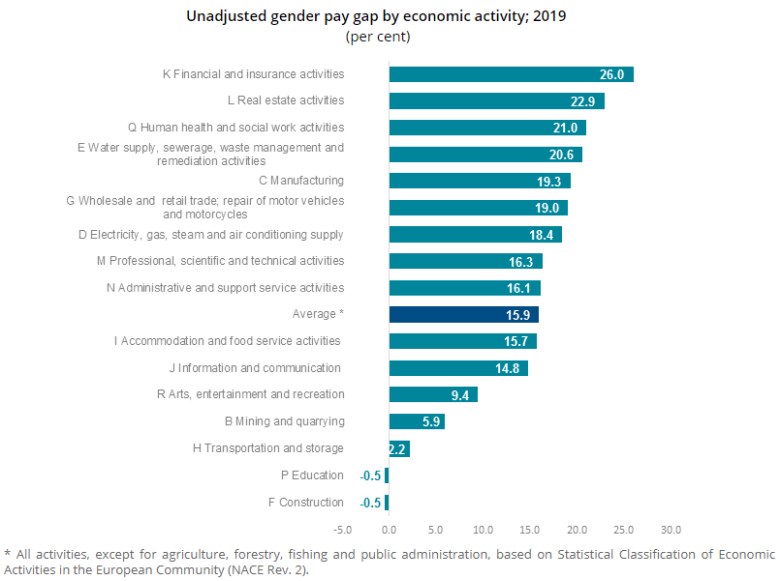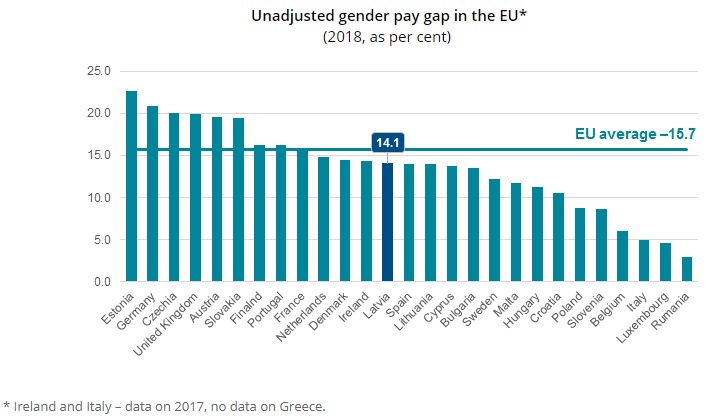Analytics, Employment, EU – Baltic States, Financial Services, Latvia, Wages
International Internet Magazine. Baltic States news & analytics
Friday, 26.04.2024, 06:10
Females on average earn 15.9% less than males in Latvia
 Print version
Print versionIn 2019, the largest unadjusted gender pay gap was observed in financial and insurance activities where males per hour earned on average 26% more than females.

In 2019, earnings of females working full-time were 19.1% lower than those of males, while gender pay gap between males and females working part-time was smaller – 12.4%.
Average gender pay gap in public sector was slightly higher than in private sector – 14.2% and 13.5%, respectively.
In 2019, the smallest unadjusted gender pay gap was recorded in the age group 55+ (10%), while the largest in age groups 35–44 and 25–34 (18.2% and 17.7%, respectively).
Unadjusted gender pay gap by age group (as %)
|
Age group, years |
2015 |
2016 |
2017 |
2018 |
2019 |
|
< 25 |
13.0 |
13.2 |
13.9 |
13.5 |
13.8 |
|
25–34 |
15.8 |
16.1 |
17.1 |
16.5 |
17.7 |
|
35–44 |
22.8 |
21.0 |
19.2 |
16.9 |
18.2 |
|
45–54 |
15.9 |
14.9 |
14.6 |
12.8 |
13.1 |
|
55–64 |
14.8 |
13.5 |
12.3 |
9.9 |
10.1 |
|
≥ 65 |
16.8 |
17.1 |
15.1 |
11.2 |
10.0 |

- 28.01.2022 BONO aims at a billion!
- 26.08.2021 LLC Dizozols Investments finalizes investment attraction deal with Crowdestor with record-high profits
- 25.01.2021 Как банкиры 90-х делили «золотую милю» в Юрмале
- 30.12.2020 Накануне 25-летия Балтийский курс/The Baltic Course уходит с рынка деловых СМИ
- 30.12.2020 On the verge of its 25th anniversary, The Baltic Course leaves business media market
- 30.12.2020 Business Education Plus предлагает анонсы бизнес-обучений в январе-феврале 2021 года
- 30.12.2020 Hotels showing strong interest in providing self-isolation service
- 30.12.2020 EU to buy additional 100 mln doses of coronavirus vaccine
- 30.12.2020 ЕС закупит 100 млн. дополнительных доз вакцины Biontech и Pfizer
- 29.12.2020 В Rietumu и в этот раз создали особые праздничные открытки и календари 2021








 «The Baltic Course» Is Sold and Stays in Business!
«The Baltic Course» Is Sold and Stays in Business!

